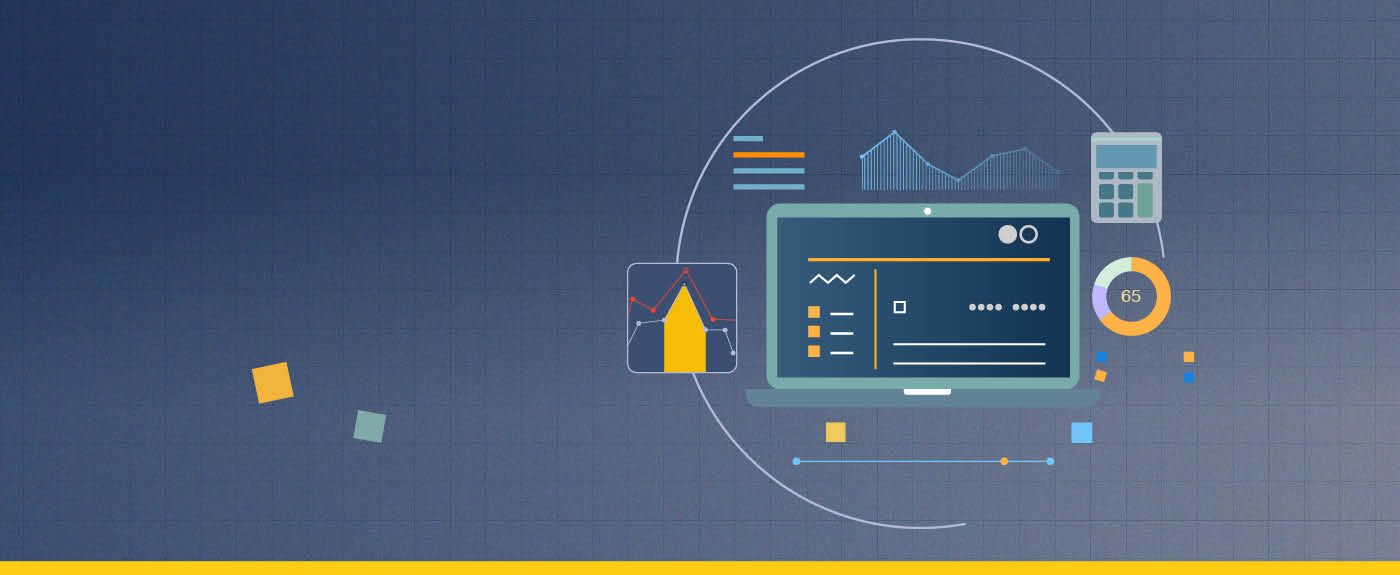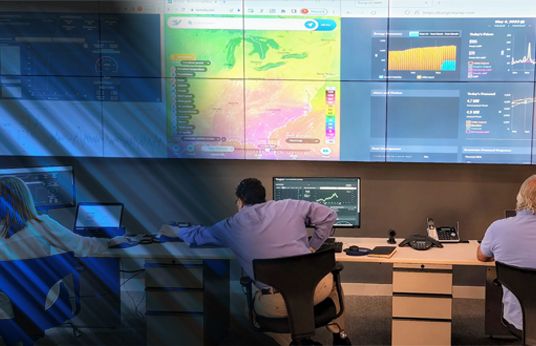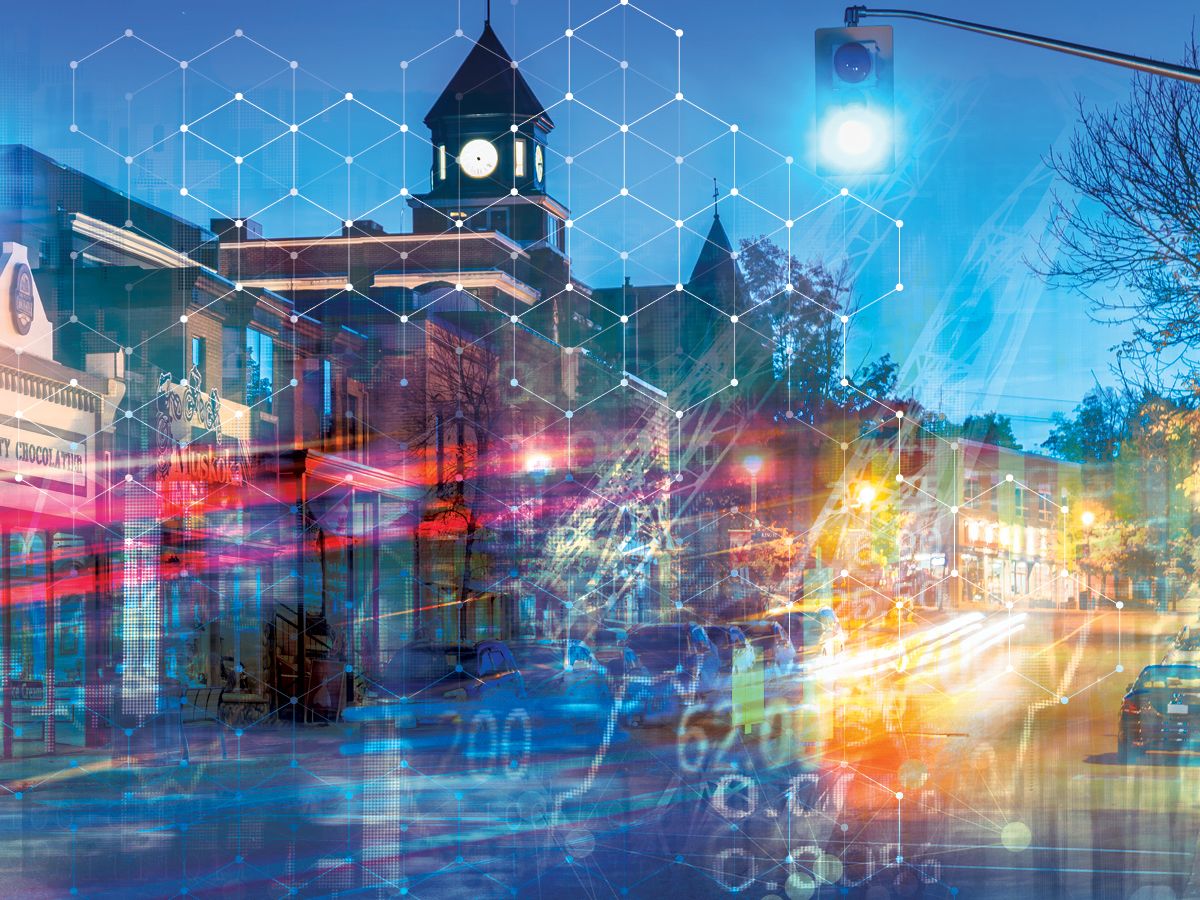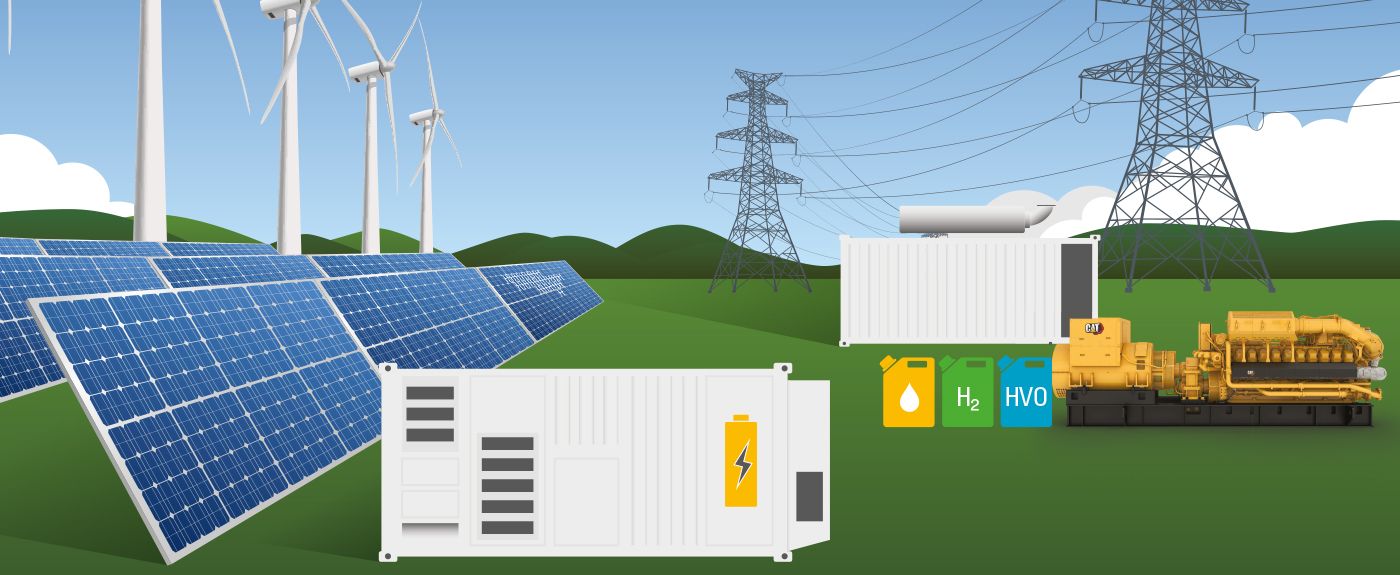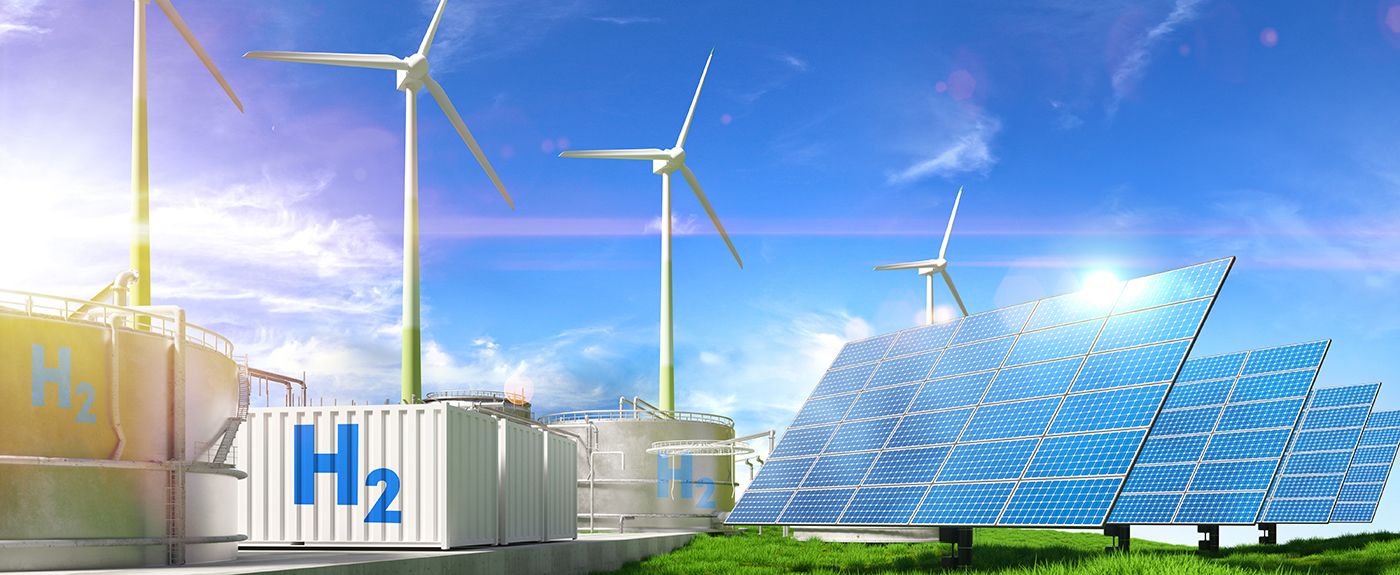

Sign In
Welcome! Sign In to personalize your Cat.com experience
If you already have an existing account with another Cat App, you can use the same account to sign in here
Register Now
One Account. All of Cat.
Your Caterpillar account is the single account you use to log in to select services and applications we offer. Shop for parts and machines online, manage your fleet, go mobile, and more.
Account Information
Site Settings
Security
Demystifying the EaaS Model
By Rob Schueffner, Integration & Energy Transition Growth Manager for the Caterpillar Electric Power Division | Posted: September 2023
Remember the old days of installing software? Every time there was something new, you had to insert a CD or DVD — or to really date myself, a floppy disk — into your computer. It took time and could be tricky if you weren’t technically inclined. It was an expensive hassle for business owners, too, who had to purchase and maintain licenses for each copy of the software installed.
Software as a Service, or SaaS, changed all that. Today, most applications — everything from Microsoft Office to Google Drive to Salesforce — are hosted by a third-party provider and made available via the web or a mobile app. You don’t need to install or configure anything on your computer, and the SaaS provider handles all maintenance, upgrades, and licensing. It’s more convenient for users and more affordable for businesses.
These “as a service” models are everywhere today. Do you listen to music on Spotify or Apple Music instead of buying albums or songs? That’s Music as a Service. Purchase groceries via Instacart or order take-out using Grubhub? That’s Food as a Service. The list goes on and on.
Energy as a Service, or EaaS, is the same concept. Rather than buying power products like generator sets, solar panels, or an entire microgrid, you purchase energy outcomes — turning ownership and upkeep of the assets over to a third party. Why are organizations ranging from grocery stores to steel mills to school districts increasingly interested in the EaaS approach? Let’s take a closer look.
What’s driving demand for EaaS?
According to the latest research, (from GlobeNewswire by notified) the global market for Energy as a Service was valued at more than $61 billion in 2021. It’s expected to surge to almost two-and-a-half times that size — nearly $149 billion — by 2030. What’s behind this explosion in growth?
First is the energy transition. The electrification of society is adding significant increases in energy demand. The traditional model, large, centralized fossil fuel power plants — just isn’t fast or flexible enough to keep up with demand.
Second are climate concerns. Those weather events we used to describe as “100-year” hurricanes, floods, fires, or heat waves — well, studies published by the AP News show they’re not happening just once per century anymore. That has a lot of organizations nervous about the resiliency of their power supplies. Whether it’s a single tree falling on an electric line or massive outages caused by a Category 5 hurricane, no one can afford a disruption in operations.
Third is the time and cost factor. Unless you’re actually in the energy business, generating, delivering, and managing energy isn’t your organization’s core strength. It requires you to invest capital in assets, operational dollars in upkeep, and a whole lot of time trying to stay on top of what’s happening with energy markets and prices. Many organizations would rather take those valuable resources and put them back into their own operations.
What are the advantages of switching to EaaS?
Given the factors pushing organizations toward Energy as a Service, you’ve probably already guessed some of the key benefits: increased energy resiliency, lower energy costs, and a reduced carbon footprint, for starters. But how does EaaS deliver these advantages? It helps to walk through a few real-world examples:
- A private university on the East Coast lost power during a major ice storm and sent its students home — then took a lot of criticism from parents upset that their children were out driving on icy roads rather than safe inside their dorm rooms. Now, through an EaaS contract, the university has access to six megawatts of natural gas generators that provide backup power.
- A large commercial bakery near Boston was experiencing significant reliability issues but couldn’t afford to purchase backup generation. At the same time, the local electric utility was looking for a way to buy power more affordably during peak loads. In this EaaS arrangement, a third-party investor purchased natural gas generators and made them available to both the bakery (to eliminate worries about power interruption) and the utility (to buy down the cost of electricity).
- A K-12 school district in northeastern Pennsylvania set up an EaaS contract that included rooftop solar PV plus load control technology that dialed back lights and lowered temperatures whenever school buildings had to rely on grid power versus solar power (cloudy days, for example). Over the course of just one year, the district saved enough to pay for two additional teachers.
Resiliency, affordability, sustainability: Are these your goals?
Thanks to EaaS, none of these organizations had to spend capital to purchase power products, nor are they responsible for maintenance, repairs, and updates to those assets. Instead, each organization chose to invest in energy outcomes — resiliency, affordability and sustainability. (And all these EaaS contracts, I’m proud to say, were facilitated by our EaaS team.)
Wondering if Energy as a Service is right for you? Watch for our November follow-up blog which will cover the criteria that makes an organization a good fit for EaaS as well as important factors to look for in a provider. Click here if you would like to be contacted by someone from our EaaS team.

Robert (Rob) Schueffner
Integration and Growth Manager within the Caterpillar Electric Power Energy Transition Commercial Solutions Team
Caterpillar Inc.
Rob Schueffner is the Integration and Growth Manager within the Caterpillar Electric Power Energy Transition Commercial Solutions Team. His responsibilities include evaluating, integrating, and partnering with related organizations. In his more than 25 years with Caterpillar, he has held a wide variety of global responsibilities within Caterpillar Energy & Transportation, including engineering, marketing, application & installation, sales management, 6 Sigma Black Belt, facility management, and strategy.
Generate Savings and Economic Dispatch
Reduce electricity costs and increase energy market program participation with Energy as a Service (EaaS) solutions. Automatically dispatch on-site assets to generate and store energy with an industry-leading technology platform and energy resource management services.

Related Stories
-
How Municipal Utilities Can Address Surging Power Demand
For many municipal utility managers I talk to, it’s getting tougher to continue providing the highest levels of reliability, service, and value. Customer preferences are changing. Some want 100% renewable power overnight; others simply care about cost. Other challenges are mounting, too: New technologies. Increased regulation. Workforce shortages. Budget constraints. And perhaps biggest of all, rising demand.
Learn More -
Act Now to Leverage CHP Tax Credits Up to 50%
The Inflation Reduction Act (IRA), signed into law in August 2022, provides nearly $400 billion in tax credits and incentives over a decade to promote climate change mitigation and stimulate clean energy development in the U.S. It’s the largest single investment in climate and energy in American history — and it includes the highest incentives ever provided by the federal government for combined heat and power (CHP) projects.
Learn More -
5 Steps to Sign-Off on a New Energy Solution
You’re a large energy consumer, maybe in healthcare, education, distribution or transportation. You’re facing pressure — internal, external or both — to increase your energy resiliency, lower your carbon emissions, reduce your energy costs, add capacity for expansion, or some combination of all four. You know you need to act (and soon), but you’re struggling with how to get started implementing a solution.
Learn More -
Is Your Organization a Good Fit for EaaS? And Is Your EaaS Partner a Good Fit for You?
Our EaaS team at Caterpillar has implemented solutions for all types of operations: from K-12 schools and grocery stores to industrial facilities. The concept — you purchase energy outcomes and turn ownership and upkeep of energy assets over to a third party — works for many organizations. How do you know if yours is one of them?
Learn More -
Hydrogen’s True Colors: A Key to Defining Carbon Intensity
Often referred to as a “clean-burning” fuel, hydrogen is the most abundant chemical substance in the universe because its combustion generates near-zero greenhouse gas emissions at the tailpipe. . It’s also colorless, odorless and burns with a near-invisible flame. So why does nearly every Google search or news story about hydrogen turn up terms like “green,” “blue” and even “pink”?
Learn More -
Distributed Energy Benefits and Grid Systems Integration
Our electric power system faces many challenges, and as the energy landscape evolves to address increased electrification, we will have even greater demand than ever before. Caterpillar is positioned to serve as a trusted partner with the technologies and expertise to provide alternatives to established energy sources and fuels that are reliable and cost effective.
Learn More -
Trends in the Energy Transition
When it comes to the ongoing efforts to decarbonize and reduce greenhouse gas (GHG) emissions, renewables are making up more and more of our sources of power generation, and we think this will continue—for many positive reasons. We have a lot of customers who are setting targets for Environmental, Social, and Governance (ESG) goals, aiming for improved carbon reduction.
Learn More
